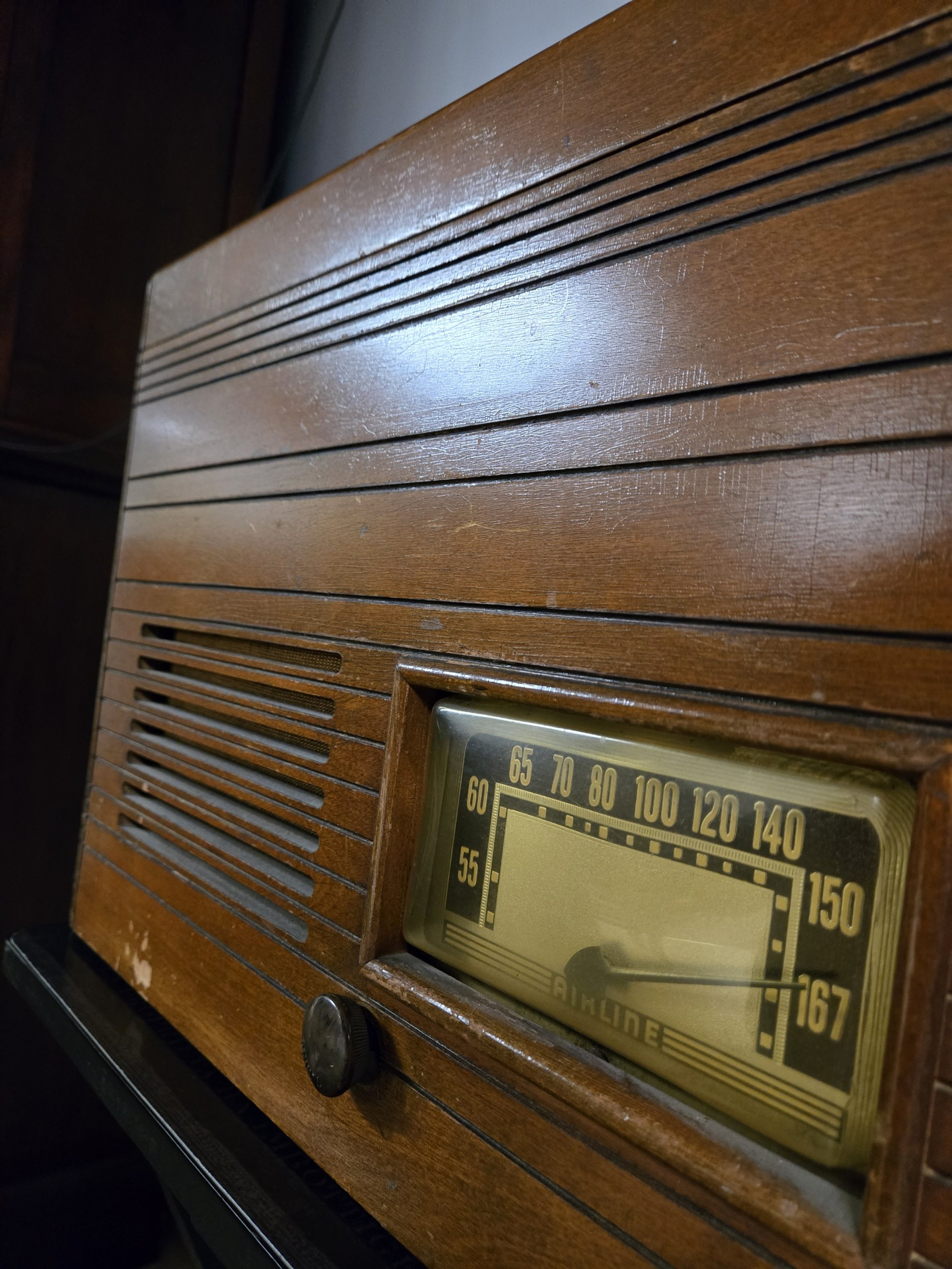Antique Montgomery Ward Radio: The Forgotten Woman Behind Its Design
How a vintage turntable led me to the story of Anne Swainson, a pioneer in industrial design
My antique Montgomery Ward radio was a gift for my husband, who works in radio, from my parents. The classic wood cabinet, streamlined grill and glowing dial are striking, reminiscent of a time before TV, when radio was the centerpiece of the home.
And as I started to dig into its history, I uncovered something: one of the leading figures behind Montgomery Ward’s product designs was a woman. Yes, a pre-WWII lady designer. Color me intrigued.
Anne Swainson was one of the first female execs in industrial design. While her name isn’t well known, she played a critical role in shaping Montgomery Ward’s product aesthetic, from radios to furniture to kitchen appliances.
Anne Swainson Shaped Montgomery Ward’s Design Legacy
Montgomery Ward was one of America’s first mail-order retailers, and they sold everything from clothing to farm equipment to home electronics. And while they didn’t manufacture radios, they did resell them under the Airline brand, in production from the 1920s through the early 1960s.
Who Was Anne Swainson - And Why Haven’t I Heard of Her?
Anne Swainson (1888–1955) was an industrial and graphic designer and total bad-ass who made history as Montgomery Ward’s first female executive. Swain was born to Swedish immigrant parents and studied home economics and design at Columbia University’s Teacher’s College and the University of Chicago. She worked in academia for years, traveling throughout Europe before eventually moving into product design in 1928.
In 1932, Montgomery Ward hired Swainson (who at an ancient 44 years old still had the audacity to be a successful human) to launch and lead their Bureau of Design, a department that influenced the look and feel of everything from radios to appliances to catalog layouts. She became one of the most powerful women in industrial design at a time when few women held any executive positions. Under her leadership, the company:
Modernized its product line
Focused on clean, practical designs appealing to the middle class
Revamped its catalog through design and photography
Saw significant sales growth during the Great Depression, thanks in part to her emphasis on affordable style
Her designs weren’t limited to radios, but her hand is visible in the streamlined wooden cases and simple layouts of the Airline models from the 1930s and ‘40s, including the one in my basement that inspired this article.
Despite her skill, Swainson was often overshadowed by male designers like Henry Dreyfuss (who I bet you have heard of, even if you don’t know why). Like so many women, she didn’t start her own firm or even put her name on her work; she designed under the Montgomery Ward brand, so her legacy has been largely forgotten.
Only recently have historians have begun to recognize her impact on the world of industrial design. Want to learn more about her career? Check out Chicago Design Stories: The Making of a Design Pioneer.
My antique Montgomery Ward radio, likely manufactured between 1938 and 1942, isn’t just a relic of early tech; it’s a reminder of how women like Anne Swainson quietly shaped the future while being completely forgotten for it.
Looking for more about historical female product designers? Check out my post on female glass designers.

